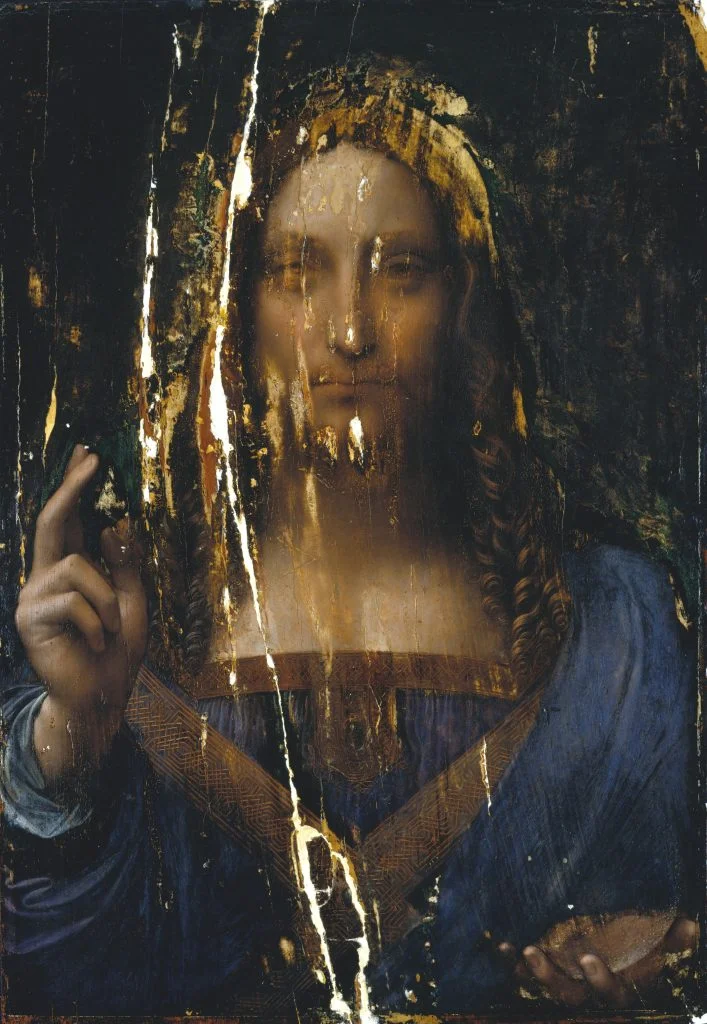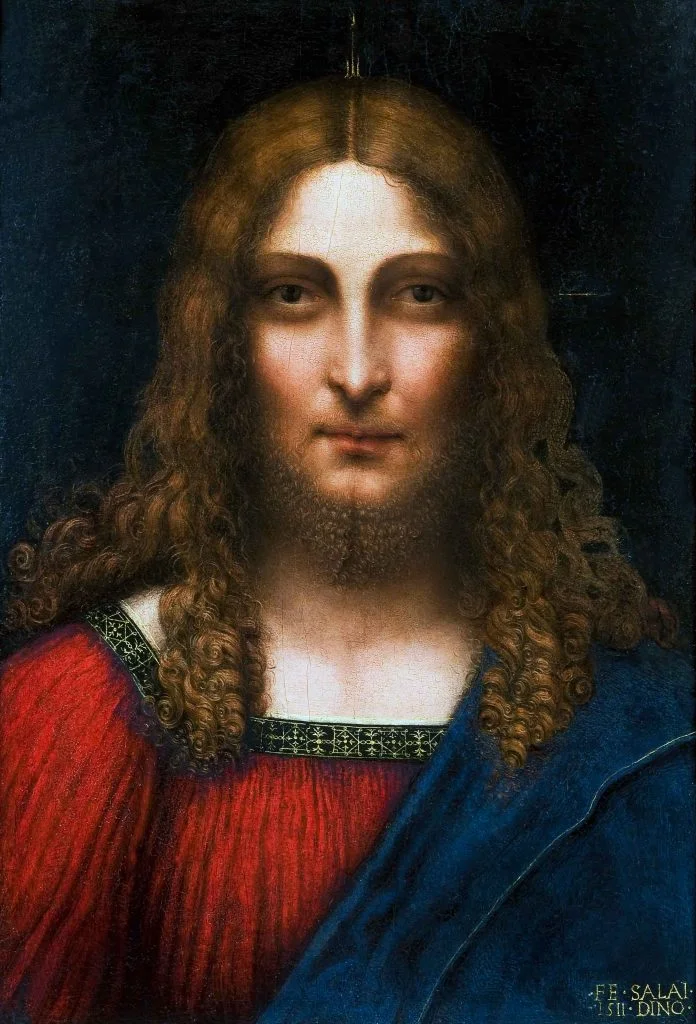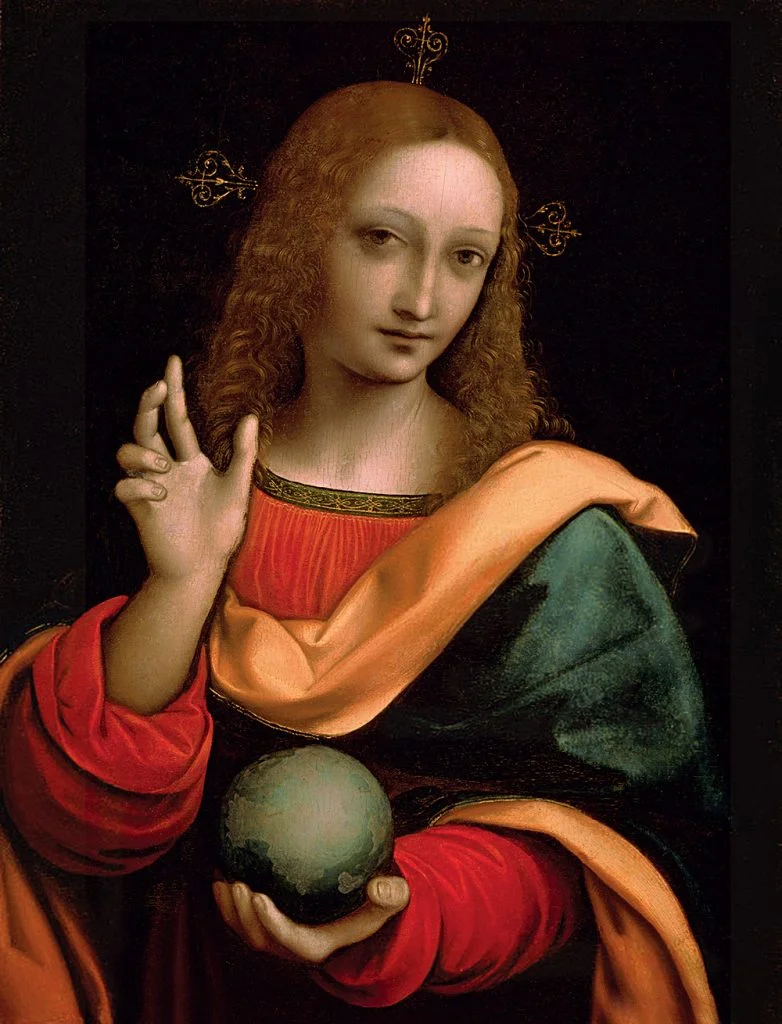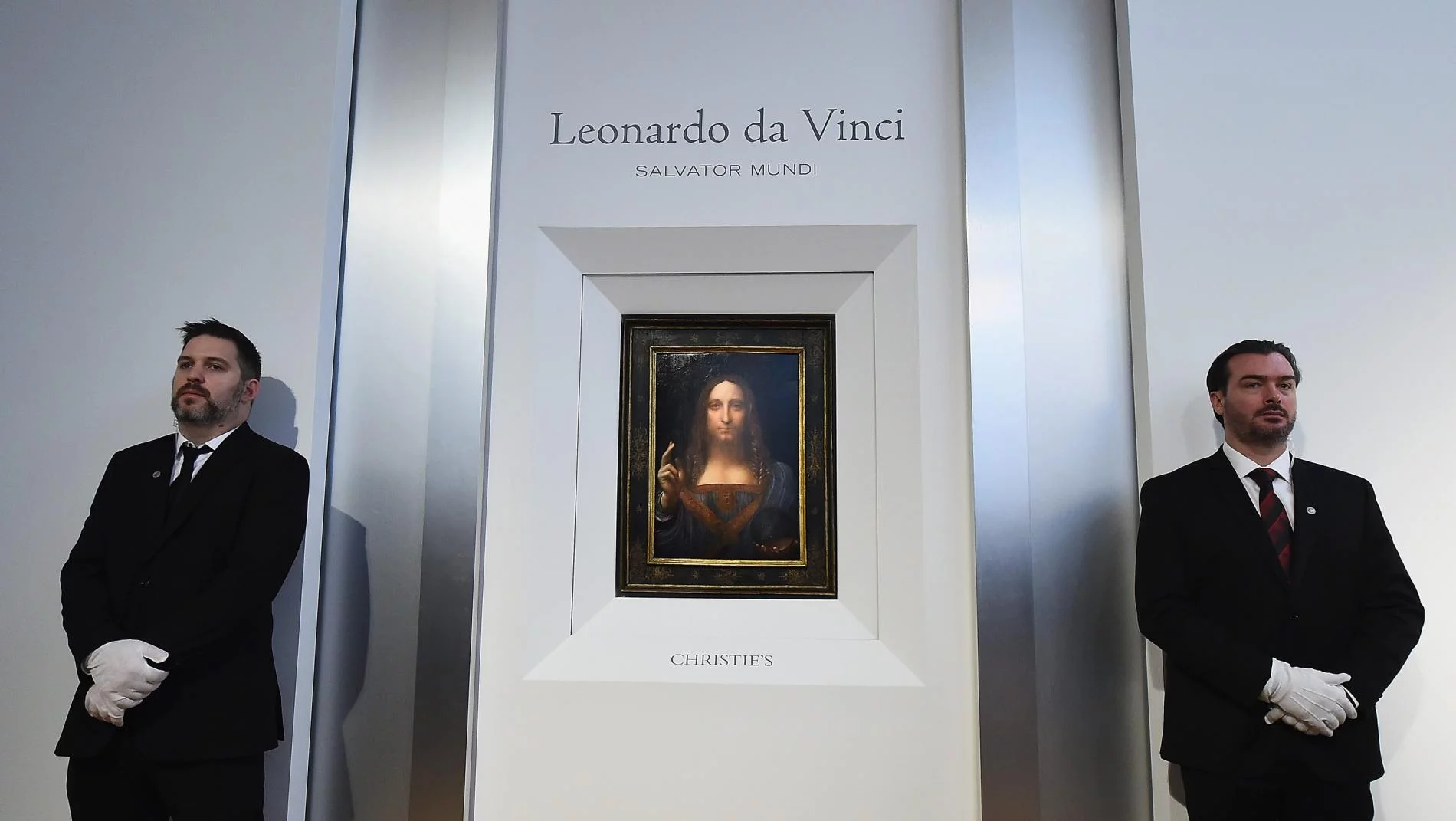In 2017, the painting was sold at auction for a record $450 million, but even before that many doubted its authorship. We found out how well-founded these rumors are.
The painting "Savior of the World" was for the first time presented to the public as a work by Leonardo da Vinci in 2011 at an exhibition at London's National Gallery. Two years later, as a result of a private transaction, she was acquired for $127.5 million by Russian billionaire Dmitry Rybolovlev. In 2017, at Christie’s auction he resold this work for $450 million to Mohammed bin Salman al-Saud, Crown Prince of Saudi Arabia. Although after the sale for a record amount, attention to "Savior of the world" increased sharply, some experts even before this event doubted its authenticity. Such rumors do not subside to this day. The Russian-language press uses the word “fake” when retelling Western news. “The most expensive painting in the world that went under the hammer was called a fake,” reported Lenta.ru in 2017. “The scam of the century: Leonardo da Vinci’s “Savior” is a fake?” wrote "Gazeta.ru" in 2019. “The most expensive painting turned out to be a fake,” reports TV program “Vesti” in 2021.
To begin with - unconditional facts. The painting, painted on a typical Italian walnut board with oil paints, is undoubtedly very ancient. Its pictorial layer, as experts have proven, was actually created at the beginning of the 16th century, when Leonardo da Vinci lived. Her stylistic analysis shows similarities with the style of the master and his many students and imitators, who are called “Leonardesques”. Another important fact: poor preservation of this paint layer, numerous losses and very strong fresh “restoration”. There is no artist's signature on the painting.

This means that we are not talking about a forgery in the widespread understanding of this term, when some modern artist these days creates a brand new work from scratch, “draws” someone else’s autograph, skillfully ages the canvas and sells the painting for a lot of money under the guise of an original by the old masters. In the case of “Savior of the World,” the problem is attribution, that is, determining which of the artists of the early 16th century was its author. The attribution of Leonardo's brush in this case can be correct or incorrect, and the error in it can be conscientious or selfish. Only in the latter case does the story of selling a painting for $450 million really turn into a scam.
Arguments of supporters of the authenticity of the painting these are: Thanks to numerous copies and variations, it is known that Leonardo da Vinci created a certain “Savior of the World”, which was believed to be either lost or destroyed. It is known that in the 17th century a painting with this name was in the collection of Charles I of England - perhaps we are talking about Leonardo’s original. The art consortium that sold “Savior of the World” in 2011, in 2005 bought it was described as an anonymous work for €8,500 from a private collection, while the owners traced the provenance (origin story) back to the collection of the English king.

For six years from the moment of purchase until its “publication” in the London National Gallery, the owners privately showed the painting to many specialists in Italian painting and representatives of world-famous museums. In articles based on information from owners, are given lists of experts and institutions who agree that it is the work of Leonardo da Vinci, based on visual inspection and stylistic analysis. IN catalog At the 2011 exhibition, the painting was included precisely as a work by Leonardo, which is a kind of “quality mark” from the museum.
On the other hand, there is a long list of art historians who do not agree with such an attribution and recall that the authorship of the painting was previously attributed to such students of Leonardo as Bernardino Luini and Boltraffio. They indicate to an optical error in the image of a crystal sphere, which the Italian genius could hardly have made, to very bad condition paintings and her major rework restorer, and also suggest that the bulk of the painting was carried out by the artist’s students and assistants. The “Savior of the World”, which was actually in the collection of Charles I, has already been found. It turned outthat this is a painting of the same name by Giampetrino, a follower of Leonardo, - the stamp on the back proved the identity. The work is in the Pushkin Museum in Moscow.

Photo: State Museum of Fine Arts. A. S. Pushkina
The answer to the real author, it would seem, should have been given by examination under a microscope. His held in 2018 in the Louvre, the main “Leonard” museum, in preparation for a major exhibition of the artist. Research has shown that the painting was worked on in several stages: the head and shoulders were painted first, and both arms and the ball were added later, possibly by another artist (with the raised right hand being the best preserved part of the painting). That is, the first version of the painting was similar in composition to the “namesake” by Salai from one of the illustrations above.
The problem is that the publication Léonardo de Vinci: Le Salvator Mundi, in which the Louvre provides this valuable information and recognizes the authorship of the painting as a genius of the Renaissance, was withdrawn from sale by the museum itself - The Art Newspaper, which published data about this study, received a copy of the brochure with the “smuggling” examination. The Louvre withdrew the book because the painting's owner, a Saudi prince, did not make it available for exhibition, depriving the museum of the right to publish information about it. The official position of the museum: “Such a publication did not exist.” This strange situation heightens the intrigue. In addition, since 2019, “Savior of the World” has disappeared from view: the owner does not give it to exhibitions or show it to independent experts. Located in the UAE, the Louvre Abu Dhabi, whose main masterpiece is the painting should have been, opened in 2017, the year of purchase, but Leonardo’s masterpiece never arrived there. This increases suspicion that something is wrong with the work.
In 2021 came out in-depth documentary The Savior for Sale. Its creators, in particular, analyze how, with the help of newspaper hype and roller with Leonardo DiCaprio practically crying, the price of the painting was inflated, which made its sale one of the main PR campaigns in the history of the art market. Additionally, in the film, two anonymous officials from the French government report that the Louvre (despite the information in the booklet) doubted the authorship and wanted to show the painting with the label "Leonardo da Vinci" and workshop" This allegedly angered Mohammed bin Salman, who insisted on the artist's name alone and demanded that the painting be exhibited next to the Mona Lisa. The matter reached the presidential office, but Macron allegedly refused to satisfy the Saudis’ demands.
Thus, the situation today is as follows. One of the most authoritative art historical institutions was unable to officially publish its findings, and the painting itself is no longer available either to specialists for study or to the public for inspection. Until new data is available, versions vary between several options:
- the painting was entirely painted by Leonardo himself;
- the painting was started by Leonardo and completed by his student;
- the painting was mostly created by a student, and Leonardo painted only one of the details;
- the entire painting was painted by another person from among Leonardo's students or followers.
Art critics who are not connected by commercial interests with the sellers or owners of the painting generally adhere to any of the listed versions, except for the very first. The attribution of Leonardo's brush is still questionable.
Cover photo: Getty Images for Christie's Auction House / Ilya S. Savenok
This is not accurate
- Painting on the Christie's auction house website
- The Art Newspaper. Disarming new findings on Leonardo’s Salvator Mundi
- M. Daley. Two developments in the no-show Louvre Abu Dhabi Leonardo Salvator Mundi saga
- Is the story about the “golden boy” and Leonardo da Vinci’s fault for his death true?
If you find a spelling or grammatical error, please let us know by highlighting the error text and clicking Ctrl+Enter.







